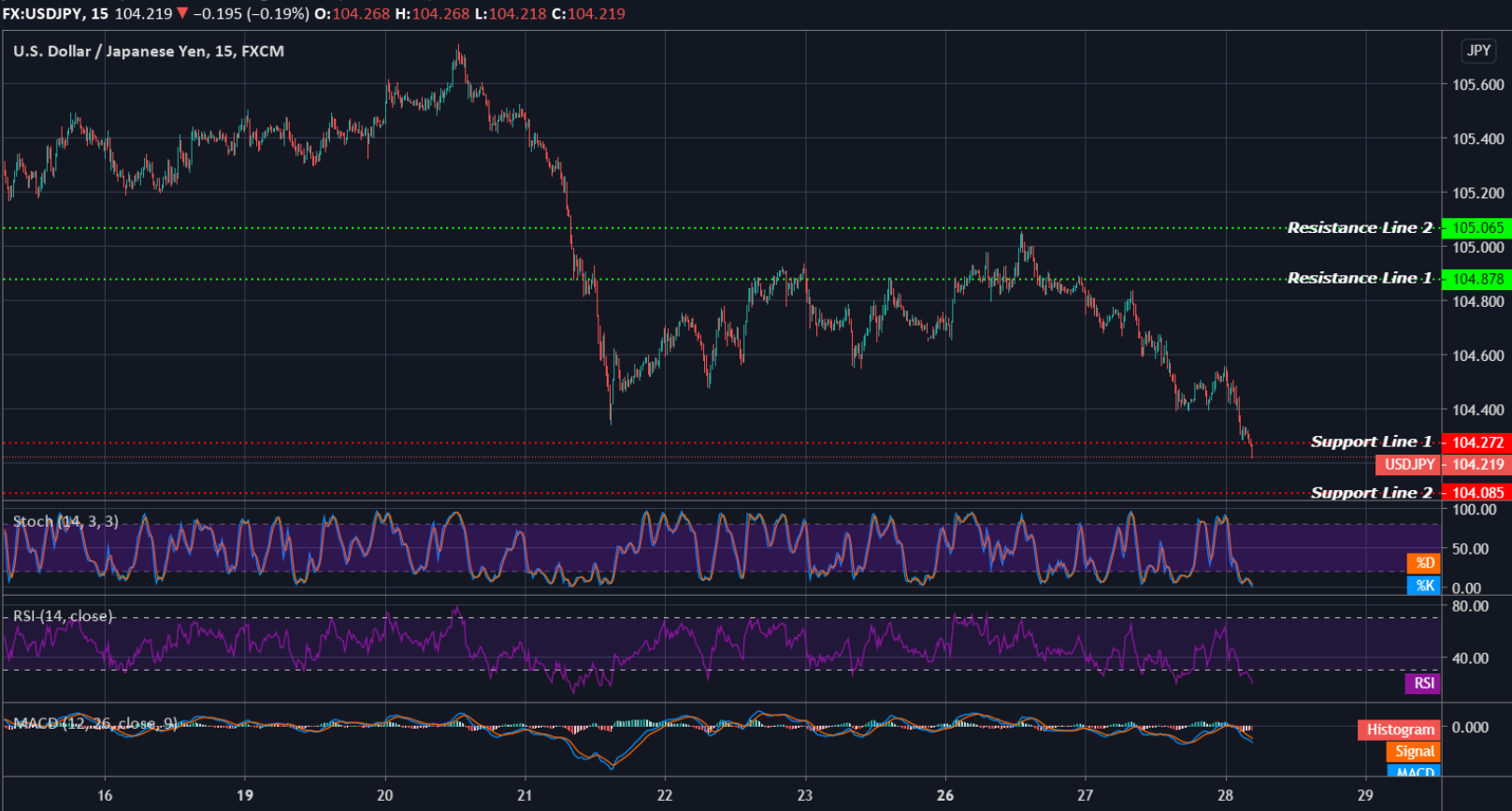EQUITIES
Asia-Pacific markets mixed on Asian afternoon trade. Australia’s S&P/ASX 200 and mainland Chinese stock, the Shanghai composite recording gain about 0.29%, and 0.16%, respectively.
Meanwhile, others edged lower. Japan’s Nikkei 225 dipped to -0.29%, Singapore’s Straits Times index down -0.48%, Hong Kong Hang Seng shed -0.26%, and the South Korea’s KOSPI at -0.17% lower.
Overnight, the Dow Jones Industrial Average fell 222.19 points, or 0.8% and the S&P 500 lost 10.29 points, or 0.30%. The Nasdaq Composite added 72.41 points, or 0.64%.
OIL
Oil prices retreated on oversupply fears after a climb in U.S. crude inventories and Libya’s production. Brent crude futures traded to $40.47 a barrel, while U.S. crude at $38.70.
On Tuesday, Brent closed at $41.20 per barrel, while WTI futures ended at $39.57 per barrel.
CURRENCIES
The U.S. dollar fell against higher risk currencies on uncertainty about the economy and the presidential election. The dollar index, which measures the greenback against a basket of major currencies, was last at 93.12.
The onshore yuan fell to 6.7140 against the dollar, extending a pullback from a 27-month high hit last week.
Following CPI data release, the Australian dollar traded at $0.7142, following an earlier low of $0.7111. The RBA is expected to lower interest rates and expand its government debt purchases at its next meeting on Nov. 3.
GOLD
Gold steadied to trade above $1,900 an ounce as investors weighed fading prospects for fiscal aid and dollar uncertainty.
Spot gold currently trading at $1,906.60 per ounce, while stands around $1,909.20 per ounce for gold futures. Previously closed at $1,907.60 and $1,911.90, respectively.
Silver trading at $24.33, platinum trading at $877.00 and palladium trading at $2,229.00.
ECONOMIC OUTLOOK
Stocks in Asia-Pacific slipped in Wednesday trade on surging coronavirus cases and a stalemate in Washington over the next fiscal aid bill darkened the economic outlook in the run up to Nov 3 U.S. presidential elections.
White House acknowledged that a coronavirus economic relief deal would likely come after the election.
Data on Tuesday showed U.S. consumer confidence unexpectedly fell in October, 100.9 this month from 101.3 in September. Although other economic figures were mostly positive, with orders for key capital goods hitting a six-year high.
Australia’s consumer price index rose 1.6% in the September.
From EIA: U.S. crude oil and gasoline stocks rose last week, with crude inventories rising by 4.6 million barrels to about 495.2 million barrels. Meanwhile, Libya’s production expected to rebound to 1 million bpd in coming weeks.
To date, number of confirmed worldwide cases for COVID-19 pandemic has surpassed 43.906 million affecting 213 countries and territories around the world and 2 international conveyances, recording more than 1.166 million fatality globally.
TECHNICAL OUTLOOK
[USDJPY]
Important Levels to Watch for Today:
- Resistance line of 104.878 and 105.065.
- Support line of 104.272 and 104.085.
Commentary/ Reason:
- The dollar is at one-month low of 104.219 against the safe haven yen.
- The decline that happened since yesterday is as weakness in stocks boosted the safe-haven demand for the yen. Also, lower T-note yields undercut the dollar and were bullish for the yen.
- The Japanese yen also appreciate against the dollar as sentiment for the greenback turned bearish due to uncertainty about the outcome of the U.S. presidential election next week, and its struggle to contain the coronavirus as people vote early before elections on Nov. 3.
- The greenback has also weakened after Trump conceded that an additional round of U.S. fiscal stimulus is unlikely before the election.















